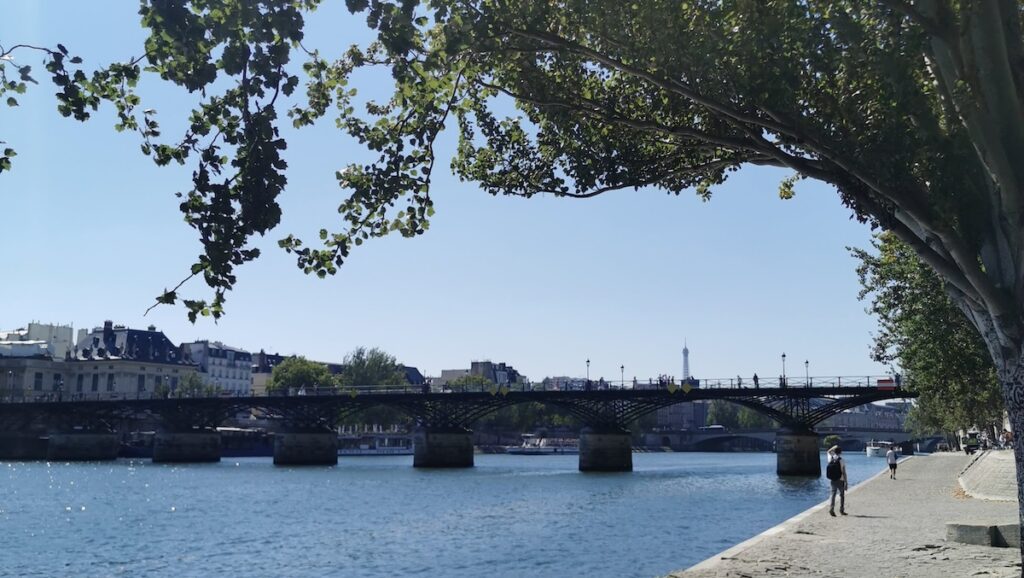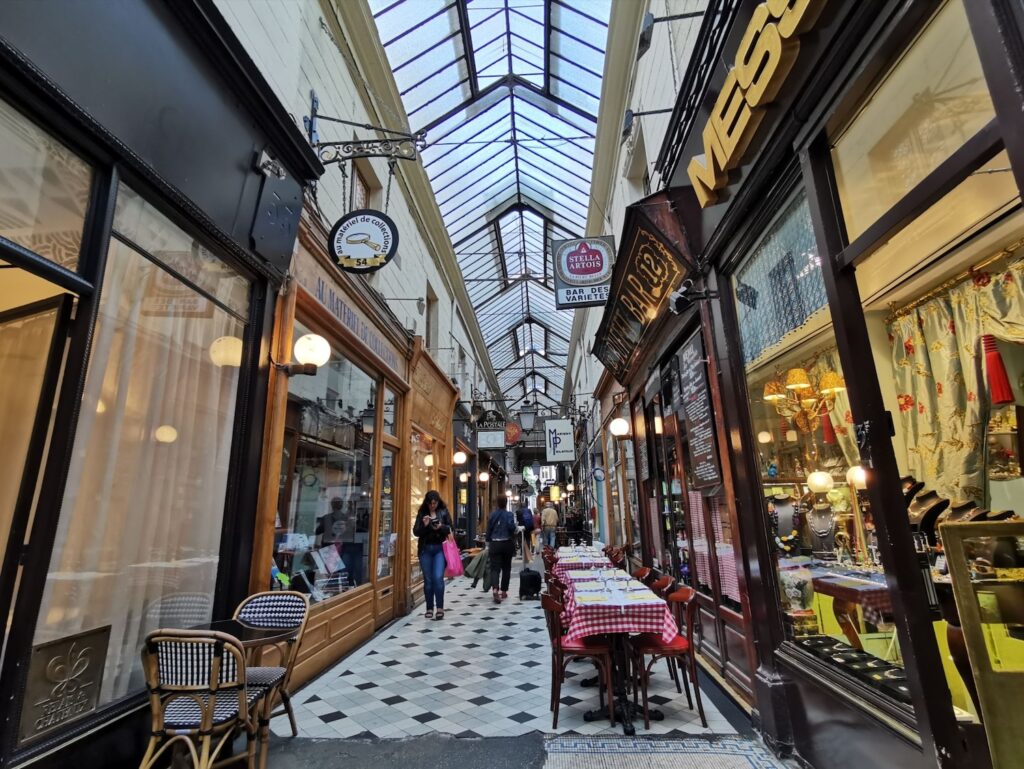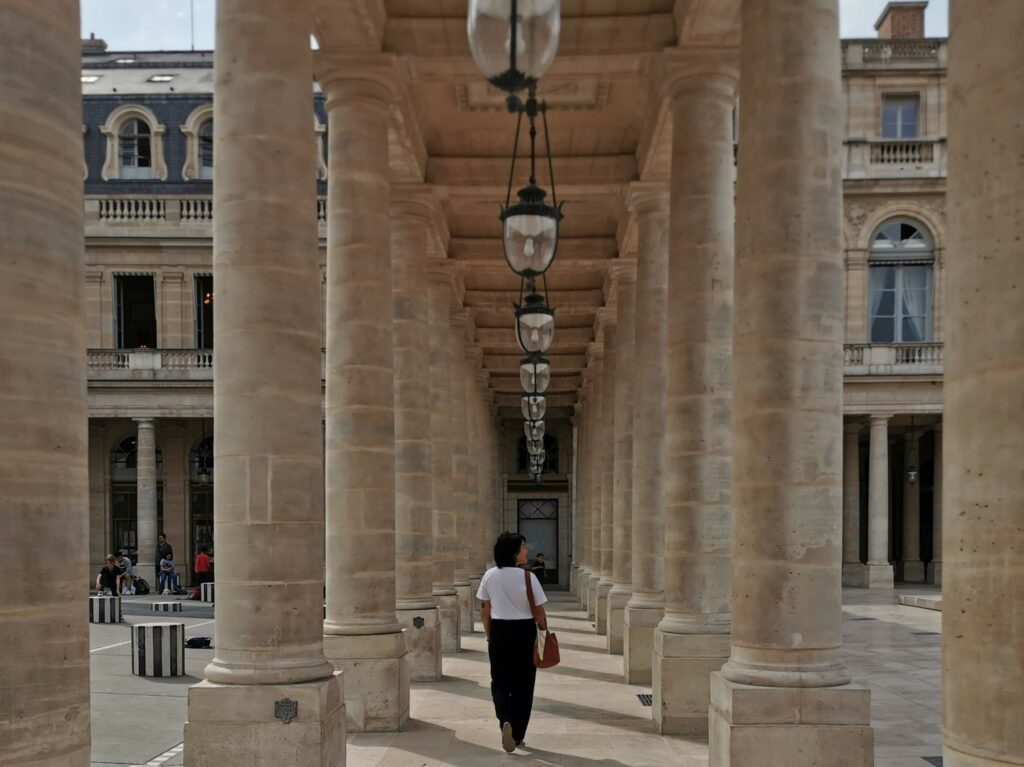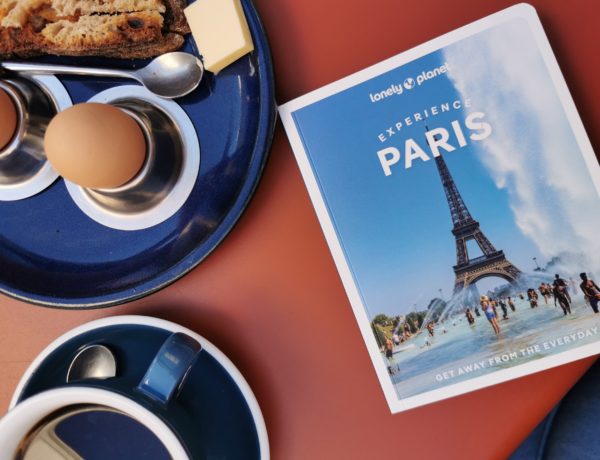Are you planning your trip to Paris, perhaps this summer for the 2024 Olympics? You might discover that navigating the city, especially during such a significant event, can feel overwhelming. However, your Paris journey can—and should—be an incredible experience! To assist you, I’ve compiled a series of articles filled with insider tips to help you navigate and plan your trip to the city, almost like a local.
Contents
- #1 There’s always more than meets the eye
- #2 Prepare to walk & wander
- #3 Don’t line up at restaurants
- #4 The Metro has its own rules
- Getting Around Paris by Metro During the 2024 Olympics
- Getting Around Paris by Metro Outside of the 2024 Olympics
- #5 Understand the difference between Paris and Greater Paris
Click here to read part II of this article, focusing on Paris “etiquette”
#1 There’s always more than meets the eye
You might think you know exactly what you want to see in Paris, and that’s partly true: the Eiffel Tower is a must-see at least once in your lifetime, as are the Great Pyramid of the Louvre and the Champs-Elysées for luxury brand aficionados. You’ll want to see Notre Dame de Paris too, especially after the major renovations it has undergone following the devastating fire. But trust me, you’ll find yourself wanting more time in Paris to go beyond the overrated hot chocolate at Angelina and those restaurants & cafés you’ve bookmarked on Instagram.
You’ll yearn to stroll, wander, and shop through the Parisian passages, sip a mint tea at the Grande Mosquée de Paris after visiting the Museum of Natural History, and grab a snack on rue Mouffetard. Make time to stop by the Musée de l’Orangerie to meditate in front of Monet’s waterlilies after a walk around the Tuileries Garden. Seek out the secret Abbey Bookshop after forgoing the now overcrowded queues at Shakespeare & Co. After visiting Le Marais, do it like the Parisians and sit on a bench at Place des Vosges to admire its impeccable symmetry. You might even want to venture to Belleville when you’ve had your fill of the classic crowds near Les Halles and Rue Montorgueil.
For all this, you’ll need thorough planning and flexibility: plan to see the landmarks you’re eager to visit, limiting yourself to one or two per day, but above all, reserve ample free time to allow the city to surprise you.

#2 Prepare to walk & wander
The easiest way to navigate Paris is through a combination of walking and using the metro. The proximity of metro stations to each other makes landmarks highly accessible, and since many are concentrated in the city center, it’s convenient to visit several in one go. However, due to this high concentration of historical and cultural sites, be prepared to walk A LOT. Allow yourself to get lost in the city, wander, and pay attention to the informative tourist signs scattered around Paris, which tell historical anecdotes about various houses and street corners.

One important consideration is that public transportation in Paris is not very wheelchair-accessible. Buses and trams offer better options in this respect, but if you need assistance walking and getting around, you’ll find it more comfortable to plan your visits well in advance. Focus on a few sights within the same vicinity and consider reaching them by car. Although this may take more time, you won’t be disappointed. Most areas near the center are full of multiple activities and interesting sights accessible on foot.
#3 Don’t line up at restaurants
If there are any restaurants you’re eager to try, be sure to book well in advance. With the increased media attention and the power of social media, securing a table at places recently spotlighted by food influencers has become increasingly challenging. So, if there’s a spot you’re set on visiting, book it early and treasure that reservation. In some places (though usually not the higher-end ones), you might even need to dine quickly, as more and more restaurants are limiting dining times and scheduling meal slots. While I understand the pressures of covering rent, staff, and product costs in Paris, I still find it hard to fully embrace this trend in my dining experiences.
Moreover, you’ll notice that more places no longer accept reservations, which complicates things further: you must either plan to eat at off-peak hours, assuming continuous service, or resign yourself to waiting in line, sometimes for over an hour! This astonishes me. Given the abundance of excellent restaurants in central Paris and most arrondissements, my main advice is not to waste your time queuing. Scout out a few alternatives in your target area, and be prepared with a plan B or even C. Or, take the advice from point #2 earlier and let yourself be surprised by a gem you stumble upon during your explorations.
Paris is overflowing with fantastic dining options, and I’m confident you’ll find something that suits your taste. This even applies to those with dietary restrictions, as the city offers an increasing number of vegetarian, vegan, gluten-free, and other dietary options, particularly in the central and eastern districts. In my view, adopting this flexible approach is the best way for those who detest long waits to enjoy their culinary experiences in Paris with peace and satisfaction!

#4 The Metro has its own rules
Navigating the metro and understanding public transport in Paris are key factors for a smooth holiday and an evened-out Paris experience.
Getting Around Paris by Metro During the 2024 Olympics
Firstly, if you’re coming to Paris for the Olympics, expect the Parisian transport network to be challenging (though I hope to be proven wrong). The organization responsible for public transportation in Paris and its surrounding region ( Ile-de-France Mobilités) has devised an ambitious transport plan, seemingly feasible only if Parisian workers stay at home—a notable irony. An official website offers the ability to anticipate transportation flow impacts in the city, featuring an interactive map. Although it’s only available in French, this article provides a comprehensive summary in English.
Regarding transport fares, a special rate will be applied from July 20, 2024, to September 8, 2024, during which a metro ticket will cost €4.40 each, more than double the usual price. To counter this, a “Paris 2024 pass“ is available, offering unlimited travel across all Paris zones for just €10/day. This is particularly advantageous as it covers all 5 zones of Greater Paris. It can be loaded onto a “Navigo Easy” transport card and is expected to be available from mid-March 2024 at metro vending machines. I have dug this up from the website in French for you, because apparently, they didn’t deem it necessary to make this option available in English for non-French speaking visitors.
Getting Around Paris by Metro Outside of the 2024 Olympics
For general navigation tips in Paris and Greater Paris, and to understand ticket options for ease outside the 2024 Olympics, here are two interesting options for tourists and occasional metro users:
Outside the Olympics period, a convenient way to use the Metro is with the “Navigo Easy” pass, a physical card that can be loaded with up to 30 T+ metro tickets. Each journey on the Metro, Tramway, or Bus consumes one ticket. This option is economical if you use public transport up to 6 times a day—considering the proximity of attractions, this is quite substantial. Note: T+ tickets are valid only in Zone 1 (central Paris) and up to the terminus of metro lines, some of which extend beyond Zone 1.
Alternatively, if you plan extensive metro use—either due to a short stay aimed at maximizing sightseeing, or because your accommodation is outside central Paris and close to a metro line terminus—I recommend the “Paris Visite” ticket. It allows travel between zones 1-3 for less than €14/day, with the price decreasing for multiple consecutive days.
If you’re using the suburban trains, be aware that you’ll need to purchase an “Origin-Destination” ticket. This type of ticket is somewhat less flexible than a Metro ticket because it requires you to know the exact stations for both your departure and arrival. This approach is practical primarily if you plan to commute during your stay in Paris. A crucial tip is to always keep this ticket within reach, as it’s necessary for passing through gates at stations where Metro and suburban lines intersect, such as Châtelet-Les Halles—one of the main transportation hubs in Paris.
For other fare options, visit the official Ile-de-France Mobilités website, available in English here.
#5 Understand the difference between Paris and Greater Paris
If some of your friends are Parisians who have spent their entire lives (or the majority of their time) within central Paris, specifically within one of the 20 “arrondissements” (Parisian districts), it’s highly likely they seldom venture beyond the “périphérique” (the ring road) into the surrounding cities. However, due to rising housing prices, many Parisians have moved from the city center, and some of the nearest suburbs have become nearly as pricey, if not more so for the wealthier neighbourhoods, making them almost as trendy as “Paris intramuros,” as the city center is known.
Why am I mentioning this? Because contrary to the prejudices Parisians may hold, more and more suburbs are becoming home to cool places and restaurants. While it’s true that the iconic landmarks are still in central Paris, you might find yourself choosing to stay in one of the surrounding cities during your holiday to save some money. Saint-Denis, Montreuil, Vincennes, Ivry-sur-Seine, Villejuif… these are just a few of the suburban areas (all located to the south-east because those are the ones I’m most familiar with) that are well connected to Paris by subway or suburban trains (RER) and can offer pleasant neighborhoods for your stay. So, don’t be afraid or disappointed to venture beyond the ring road: this might indeed offer you the most authentic local experience.
My sole recommendation is to ensure you stay within walking distance of a Metro or train station. This will allow you to easily reach the center of Paris and enjoy sightseeing during the day. If you have more time and wish to experience Greater Paris like a local, consider visiting the “Enlarge Your Paris” website (available in French). It offers insights into the suburbs for Parisians looking to explore beyond their city center.
If you need a guidebook, think about getting yourself the Lonely Planet Experience Paris which I co-authored.
With all that said, I wish you a pleasant stay in Paris! Don’t forget to check out the second part of this article, where I delve into some of Paris’s typical customs and habits. It will help you understand the essence of Parisian behavior!




No Comments